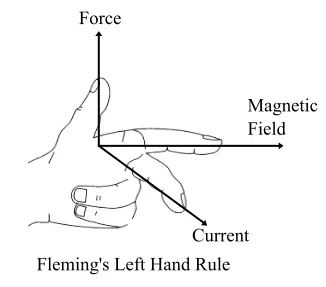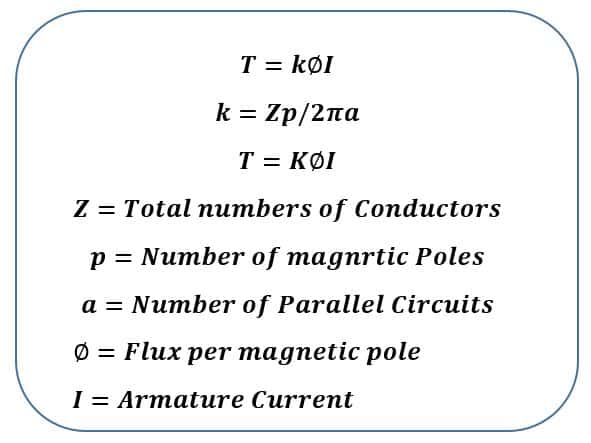The Direction of rotation of the DC Motor can be reversed by reversing the direction of torque of the motor. When the motor exerts torque in a clockwise direction, it rotates in the clockwise direction. When the motor exerts torque in an anti-clockwise direction, the motor rotates in an anti-clockwise direction. Thus, the direction of the DC motor can be reversed by reversing the direction of the torque.
The direction of the force experienced by the armature conductor can be known by Fleming’s left-hand rule.

The force experienced by the armature conductor is
F = B l I Newton (N)
B = Flux density due to the flux produced by the field winding.
l = Active length of the conductor.
I = Magnitude of the current passing through the conductor.
The direction of force can be reversed by changing the direction of magnetic flux or armature current. With the change in the direction of force, the direction of torque also gets reversed.
The torque equation of the DC motor is expressed by following a mathematical formula.

From equation(1), it is clear that the magnitude and direction of DC motor torque depend on the following.
1, Flux/Pole
2. Armature Current
The direction of the torque can be reversed by reversing the direction of the flux or by reversing the direction of the armature current. The direction of the flux can be changed by reversing the direction of the field current. If the direction of the field current and armature current is changed, the motor direction will not change.
Thus, the direction of rotation of the DC motors can be reversed in different DC motors, as given below.
In the case of a separately excited DC motor and shunt DC motor, the direction of the motor can be changed by reversing the direction of either field current or armature current.
In the case of a series DC motor, the direction of the motor can be changed by reversing the polarity of either the field or armature coil.
Related Articles: